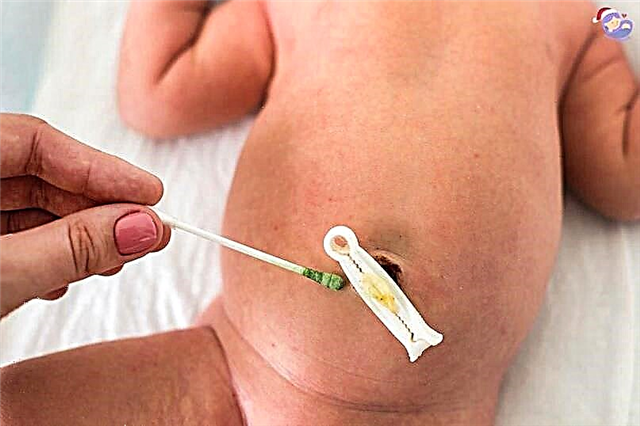Enteritis is not a rare disease in children and is characterized by impaired digestion and absorption, and can cause many complications. Here we will discuss enteritis in children, its causes, symptoms and treatment options.
The small intestine extends from the stomach to the large intestine. It is the longest part of the human alimentary tract, about 6 meters long. The small intestine is an essential organ for digestion. It consists of 3 sections: - the duodenum, leading from the stomach, jejunum and ileum, which continues to the large intestine. Like any part of the digestive tract, the small intestine is prone to inflammation for various reasons.
Enteritis is an inflammation of the small intestine. Duodenitis, jejunitis and ileitis are subtypes of enteritis that are localized only in a certain part of the small intestine - the duodenum, jejunum and ileum, respectively.
The term enteritis is often not used by itself, as the disease is usually associated with inflammation of the adjacent parts of the digestive tract. In some cases, along with the small intestine, inflammation can affect the stomach (gastroenteritis) and the large intestine (enterocolitis). However, this should not detract from the fact that isolated inflammation of the small intestine is possible, and enteritis is as serious as gastritis (inflammation of the stomach only) and colitis (only inflammation of the colon).
The role of the small intestine in digestion
The small intestine binds to several important structures in the digestive system besides the large intestine and stomach. The pancreas and gallbladder release their contents into the small intestine, in particular into the duodenum. Although digestion and absorption begin in the mouth and build up in the stomach, most of these processes take place in the small intestine.
Along with the digestive enzymes of the stomach, pancreas, and bile from the gallbladder, the small intestine also has its own enzymes that aid in digestion. They are produced by enterocytes (cells in the epithelium of the intestinal mucosa). These enzymes include: isomaltase, maltase, sucrase, lactase for the breakdown of carbohydrates; peptidase for protein digestion and lipase for fat. The small intestine secretes approximately 2 liters of enzymes, water and mucus daily.
However, its most important function is to absorb most of the nutrients. When the small intestine becomes inflamed, its absorbing function is severely impaired, and this largely determines the clinical manifestation.
Due to inflammation, swelling of the intestinal wall occurs, this leads to a violation of the absorption of nutrients from the lumen. Water-electrolyte exchange between tissue spaces and the intestinal lumen is not regulated, and a lot of water and electrolytes are released into the small intestine. In addition, epithelial cells can be destroyed and ulcers sometimes form. In addition to pathological changes on the wall, the microenvironment in the small intestine is also disturbed, which favors the reproduction of pathogenic microorganisms.

The reasons for the development of the disease in children
Enteritis has many causes. The most common are viruses and bacteria.
Viral enteritis
Group A rotavirus is the cause of 25 - 65% of cases of severe enteritis in infants. Acute infections with group C rotavirus are also common throughout the world.
After rotavirus, norovirus is the most significant cause of acute enteritis in children.
Astrovirus infection is associated with 2-9% of cases of infantile enteritis worldwide, making it the third most common cause of the disease after rotavirus and calicivirus.
Researchers have long recognized that certain intestinal adenoviruses are an important cause of infant enteritis. Research confirms that they cause 2-6% of cases.
Bacterial enteritis
The bacteria can cause gastroenteritis directly by infecting the intestinal lining. Certain bacteria, such as Staphylococcus aureus, produce a toxin that causes symptoms.
Salmonellosis, dysentery, and campylobateriasis are the three major causes of bacterial enteritis worldwide.
Dysentery disease is higher in the summer and fall, while campylobacteriosis usually occurs in the summer months. Yersiniosis occurs most commonly in winter and in colder climates.
Salmonella infection occurs through the ingestion of food and water contaminated with bacteria, as well as through contact with poultry or turtles.
Campylobacteriosis develops as a result of the consumption of raw or undercooked meat from poultry and other animals. Infants who do not eat these foods can become infected through contact with poultry. Campylobacteriosis has also been associated with drinking unpasteurized milk or contaminated water. The infection can spread to humans through contact with the stool of an infected companion animal (such as cats or dogs). Campylobacteriosis is usually not transmitted from person to person.
Shigella bacteria usually spread from an infected person to another. Shigella is present in the stool of an infected child while the child is sick and for up to 1 to 2 weeks after infection. Dysentery can be contracted by eating spoiled food, contaminated drinking water, or swimming in a polluted body of water.
Organisms such as E coli and Clostridium belong to the normal intestinal flora, but their pathogenic strains can cause enteritis.

Other causes of enteritis
Parasites: lamblia and cryptosporidia
These tiny microorganisms are less likely to cause enteritis. A child becomes infected with one of them by drinking contaminated water. Pools are common places of contact with these parasites.
Autoimmune diseases
In autoimmune disease, immune cells attack healthy tissue in the gut, which causes chronic enteritis in children. These diseases usually have no known cause and are caused by environmental factors and genetics. One such case is an inflammatory bowel disease known as Crohn's disease.

Exposure to radiation
Enteritis develops when radiation damages healthy cells in the intestines and becomes inflamed. This condition usually improves several weeks after the end of therapy. But sometimes the symptoms are chronic and persist for more than one month.
Injury
Damage to the small intestine can make it susceptible to infection, leading to inflammation. It is commonly associated with invasive procedures and surgery.
Medications
There are some medicines that can cause enteritis. This includes Ibuprofen and Naproxen sodium.
Excessive bacterial growth
This is another cause of enteritis. A build-up of bacteria in the small intestine is sometimes seen with diabetes, chronic pancreatitis, intestinal damage, and the use of certain medications.

Symptoms
Enteritis symptoms range from mild to severe. They may develop several hours after a bacteria or virus has entered the small intestine, or they may not appear for several days.
Common signs and symptoms of enteritis:
- a slight increase in body temperature, usually less than 37.7 ° C;
- nausea with or without vomiting;
- cramping abdominal pain. Discomfort worsens soon after eating;
- mild to moderate diarrhea.
For viral enteritis, frequent watery stools are more common, and stools with blood or mucus indicate a bacterial pathogen. Likewise, prolonged diarrhea (> 14 days) corresponds to a parasitic or non-infectious cause of the disease.

More serious signs and symptoms of enteritis:
- blood in vomit or stool (this is never normal and the affected child must be shown to a doctor immediately);
- vomiting for more than 48 hours;
- fever above 40 0C;
- bloating;
- more severe abdominal pain;
- dehydration.
Confusion, weakness, decreased urination, dry mouth, dry skin, and lack of tears and sweat are characteristic symptoms of this condition.

Diagnostics
Symptoms, especially watery diarrhea and vomiting, that persist for three days or more are a clear indicator of enteritis. However, the specialist may ask a few questions about food, the environment in which the child lives. Your doctor may also suggest some basic blood and stool laboratory tests if needed.
Treatment
Treatment of enteritis in children requires an integrated approach.
Rehydration
Oral rehydration therapy is the cornerstone of treatment for severe watery diarrhea. Research confirms that early rehydration speeds up recovery.
Oral rehydration therapy using balanced electrolyte solutions is sometimes all that is needed to replenish the child's fluid supply. Plain water is not recommended as it can dilute electrolytes in the body.
A feature of oral rehydration is a small, frequent dose. Limit the amount of fluid consumed at a time. There are various schemes.
- Offer 10 ml of liquid at a time. Wait 5-10 minutes, then repeat.
- If this value is tolerated without vomiting, increase the amount of fluid to 20 ml. Wait and repeat.
- If applicable, increase the amount of the suggested liquid to 30 ml at a time.
- If vomiting occurs, go back to 10 ml and restart the regimen.
- As soon as the child is able to consume a significant amount of liquid by mouth, solid foods can be offered.

The goal is to provide fluid to the child, not calories. In the short term, rehydration is more important than nutrition.
Drug treatment
The goal of pharmacotherapy is to relieve disease, prevent complications, and prevent. Antidiarrheal drugs are contraindicated due to lack of benefit and high risk of adverse effects.
Antibiotics are not prescribed unless parasites and bacteria are identified as the cause of the infection. Antibiotics are offered for some bacteria, namely Campylobacter, Shigella, and Vibrio cholerae, when properly identified by laboratory tests. Otherwise, antibiotic use can aggravate some infections.
Salmonella is not treated with antibiotics. The body is able to fight and get rid of infection without these drugs, thanks to maintenance therapy that includes fluid intake and rest.
After antibacterial treatment, it is recommended to take medications that normalize the intestinal microflora. Various sorbents also have a good effect.
Diet for enteritis in children
A diet of bananas, rice, applesauce and toast is recommended for enteritis. This diet is a priority during recovery.
Watch carefully for signs of malabsorption (malabsorption) when feeding dairy products containing lactose.
Breast milk contains many substances that promote the growth of gut flora and fight bacteria; thus, it is recommended to continue breastfeeding throughout the illness for infants.
Conclusion
The prognosis of enteritis in most children infected with the virus and bacteria is favorable, with good quality hydration. Because babies tend to dehydrate faster and sometimes find it more difficult to rehydrate them orally, the prognosis will vary depending on the degree of dehydration and the effectiveness of rehydration attempts.



